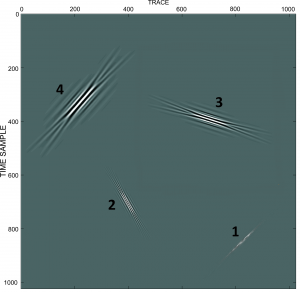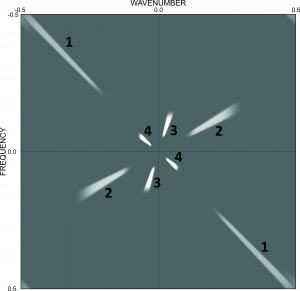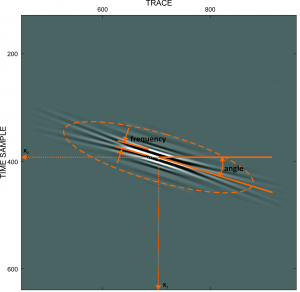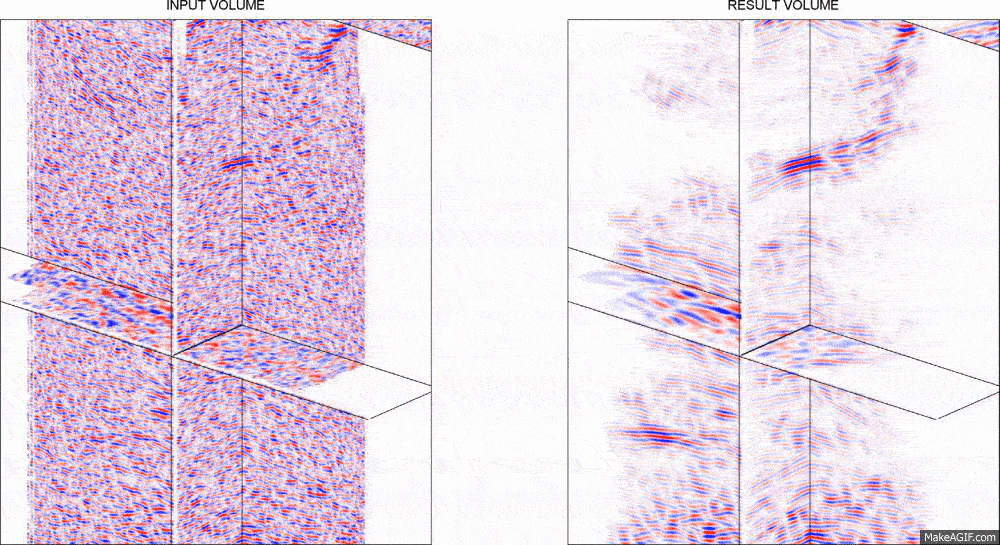Curvelets
Contamination of seismic signal with noise of various origins is one of the main challenges encountered during processing and interpretation of seismic data. Several methods exist for eliminating different types of noises like coherent or incoherent noise and multiples, but optimal random noise attenuation remains difficult. This motivated us to investigate relatively new technique of incoherent noise removal and signal enhancement based on discrete curvelet transform (DCT). Features like multi-resolution, multi-direction and locality of DCT introduce minimal overlapping between coefficients representing signal and noise in curvelet domain which is the prime advantage of this method.



Parametrization including frequency, dip and spacial coordinates allows to map particular smoothly continuous events such as wavefronts or reflectors into separate or in practice almost separate sets of coefficients, which makes curvelet domain favorable in regard to seismic data processing. Even if the subsurface structure is complicated with conflicting dips, intersecting curved events, faults, etc. the curvelet transform is still able to decompose the data into linear sum of needle-shaped atom functions. Our work-flow based on curvelet denosing already proved its robustness with pre-stack and 2D/3D post-stack seismic data.

